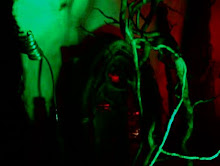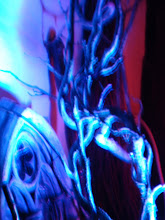Part 1
Lately I have had some amazing conversations about Art. With the new fine artist of the atelier, I have been taken through the mystery of how artists create the view in front of them. He himself paints like a photograph, but of course, the painting of the scene adds some strange gloss of magic to it, the colours, whilst accurate to the scene in question, have a super-enhanced quality, as if seen with the emotions as well as the clarity of the camera eye... As all really excellent paintings of landscapes do. And as I have longed to do. But, in a mixture of diffidence and naivity, left myself imagining that painters just went out into the landscape, and, moved by the beauty or drama or quirkiness of the scene, sat down and captured what they saw out of sheer inspiration, as if merging themselves with the visual world alone gave them the capacity to suddenly reproduce it with a heightened accuracy like a photograph or not, but always catching up what was most special about the light, colour or shapes of whatever it was. As if, in fact, it was a state of higher consciousness or meditative spirituality that brought about the effect.
How could I have been so lazy? to quote the ever-brilliant-with-words Bjork. The artist the other evening was kind enough to give me a short lecture on painting, and which revolutionized my understanding of the matter. He showed me how artists measure - they don't sit down with some wonderful intuition about how to reproduce distance on canvas or other surfaces, they sit down and measure it, obeying rules of perspective, observing in a mathematical way, the dimensions of the scene before them. If ever I knew the technical aspects to which he drew my attention, I had long forgotten, allowing the glamour of art to throw the dust of impossibility into my eyes, and so make sure that not having the confidence to pursue fine art had a fine lazy excuse for it also. Once he had taken the crippling mystery from distances, he then proceeded to mix up a colour to match that of the floor.
Again, my stupidity was made plain. How often had I merely thought that to darken or lighten a colour was to add black or white, putting in too much, or when mixing up a colour, ending up with brown sludge? Before only using primary poster paints unmixed and then giving up altogether? And how come - when he made pretty plain that most people came unstuck by using red for red, instead of adding blue to it, that they made shadows grey not noticing when they were blue, and other similar mistakes - how come I, who had not made those common mistakes, who see the 'purple light under the trees' one only gets in January, could have made such an error when mixing paint?
Because of course, with the colour and writing workshops, it's a thing I never do. Always alive to bluey purples, reddy oranges, yellowy greens and the like as I am during these workshops, in order to stop people using such terms and introduce them to violets, blood oranges and olives, and aware of what happens when you mix the colour gels which we use for the workshops, how could I have been so wooden when it came to transferring that knowledge to painting?
He facsimiled the colour of the floor, using yellow, red, even blue...in a way that I envied. But made it clear, that while inspiration was the motivator to get things right and keep on going at a canvas that took months to do, there was a real science here to fine art. Love of mountains is certainly not - or at least only extremely rarely! - enough to ensure and secure a good painting of them. Technical ability, patience, meticulousness, and more, all were required to achieve the skill and accomplishment which I had - idiotically - dreamt only came from inspiration, and to which I had so long yearned towards.
Part 2
It clarified things wonderfully. I now saw that it was a matter of time and effort - and if I put in those things, then I might achieve the thing I had wanted joint-most (along with appearing in Noel Coward and Dario Fo plays! doing site spec performance installation, making arty films and garden design). But when I thought about it, along with a feeling of relief and exhilaration, came a realization. In many ways the things I wanted to achieve with light and colour were better suited to mediums like photography, video, acetate...and words. The mediums I use now. When I thought about the only palettes which I do use, the palettes of the hundreds of words for colour which there are in English...the colours of the stage lights and the acetates, I didn't feel so bad. Or felt - perhaps for the first time, that (now I had a choice! or felt I had) that I was doing 'the right thing', that maybe I am engaging with visual art in the way that I ought to be, and not to chase after skills which would take so much time to learn, in which I could possibly say little that was 'new'...or to know that if I carved the time and will, it could be so, and so love the things which I already do, better, value them more and make more time or space for them.
Just as storytelling means that I don't have to be ordered about by a director whose vision for the production I might not share, and have, along with the characters I do love, to do characters in which I can't believe or enjoy, because I don't want to let go in the way that gives you the conviction to play characters you hate or are bored by.
Yes. It opened a door in the mind that had been shut too long. Grateful thanks to the artist for opening it. Now...where are those gels?



